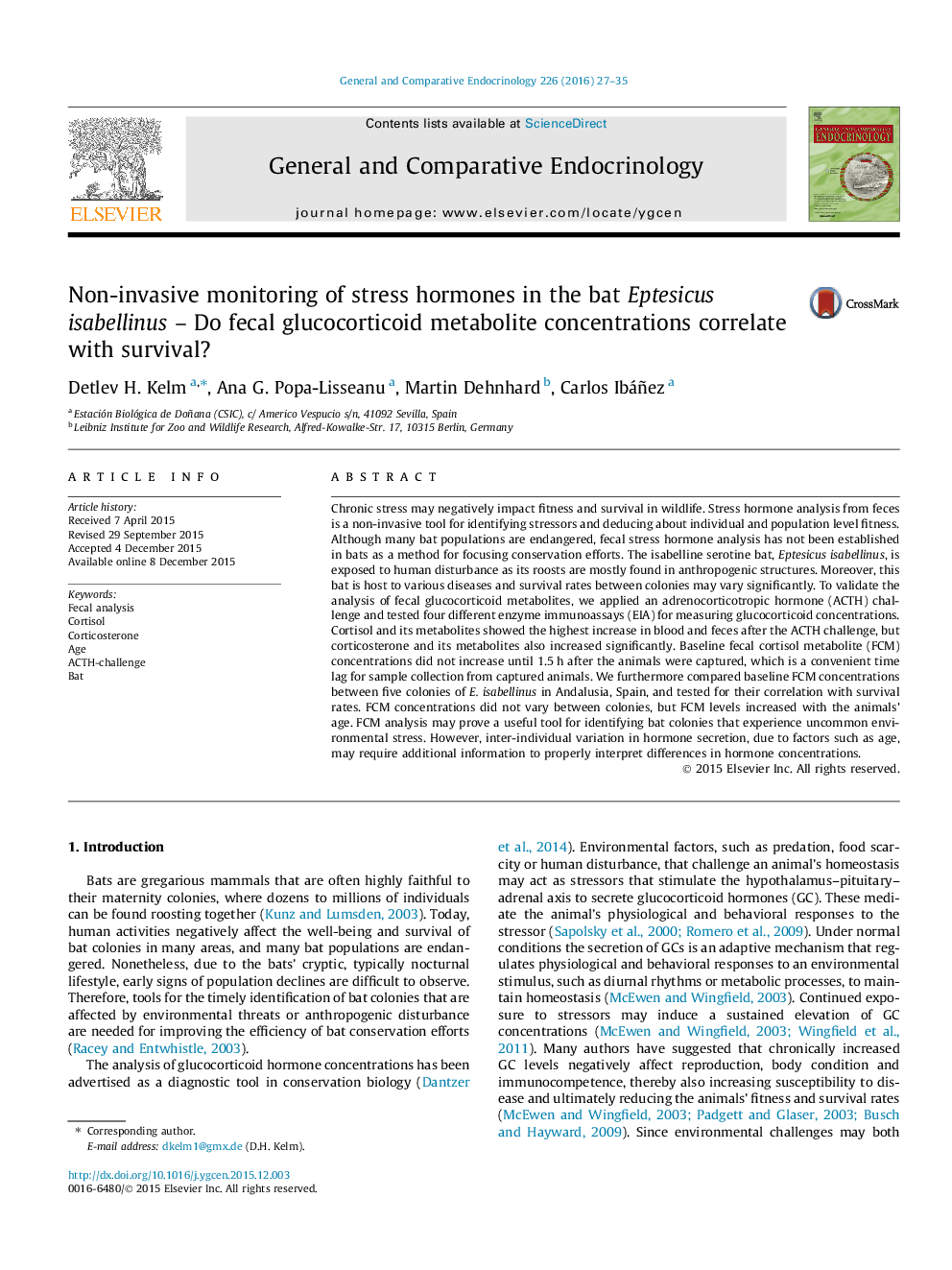| کد مقاله | کد نشریه | سال انتشار | مقاله انگلیسی | نسخه تمام متن |
|---|---|---|---|---|
| 2799822 | 1568880 | 2016 | 9 صفحه PDF | دانلود رایگان |

• Fecal glucocorticoid analysis can reveal glucocorticoid dynamics in the bat Eptesicus isabellinus.
• Fecal cortisol metabolites (FCM) had the highest dynamics after stimulation with ACTH.
• There were no differences in FCM between maternity colonies of E. isabellinus with varying survival rates.
• FCM increased with age in adult females, but juveniles had higher FCM than adults.
• For suitable interpretation FCM data need to be corrected for additional parameters, e.g. for the animal’s age.
Chronic stress may negatively impact fitness and survival in wildlife. Stress hormone analysis from feces is a non-invasive tool for identifying stressors and deducing about individual and population level fitness. Although many bat populations are endangered, fecal stress hormone analysis has not been established in bats as a method for focusing conservation efforts. The isabelline serotine bat, Eptesicus isabellinus, is exposed to human disturbance as its roosts are mostly found in anthropogenic structures. Moreover, this bat is host to various diseases and survival rates between colonies may vary significantly. To validate the analysis of fecal glucocorticoid metabolites, we applied an adrenocorticotropic hormone (ACTH) challenge and tested four different enzyme immunoassays (EIA) for measuring glucocorticoid concentrations. Cortisol and its metabolites showed the highest increase in blood and feces after the ACTH challenge, but corticosterone and its metabolites also increased significantly. Baseline fecal cortisol metabolite (FCM) concentrations did not increase until 1.5 h after the animals were captured, which is a convenient time lag for sample collection from captured animals. We furthermore compared baseline FCM concentrations between five colonies of E. isabellinus in Andalusia, Spain, and tested for their correlation with survival rates. FCM concentrations did not vary between colonies, but FCM levels increased with the animals’ age. FCM analysis may prove a useful tool for identifying bat colonies that experience uncommon environmental stress. However, inter-individual variation in hormone secretion, due to factors such as age, may require additional information to properly interpret differences in hormone concentrations.
Journal: General and Comparative Endocrinology - Volume 226, 15 January 2016, Pages 27–35